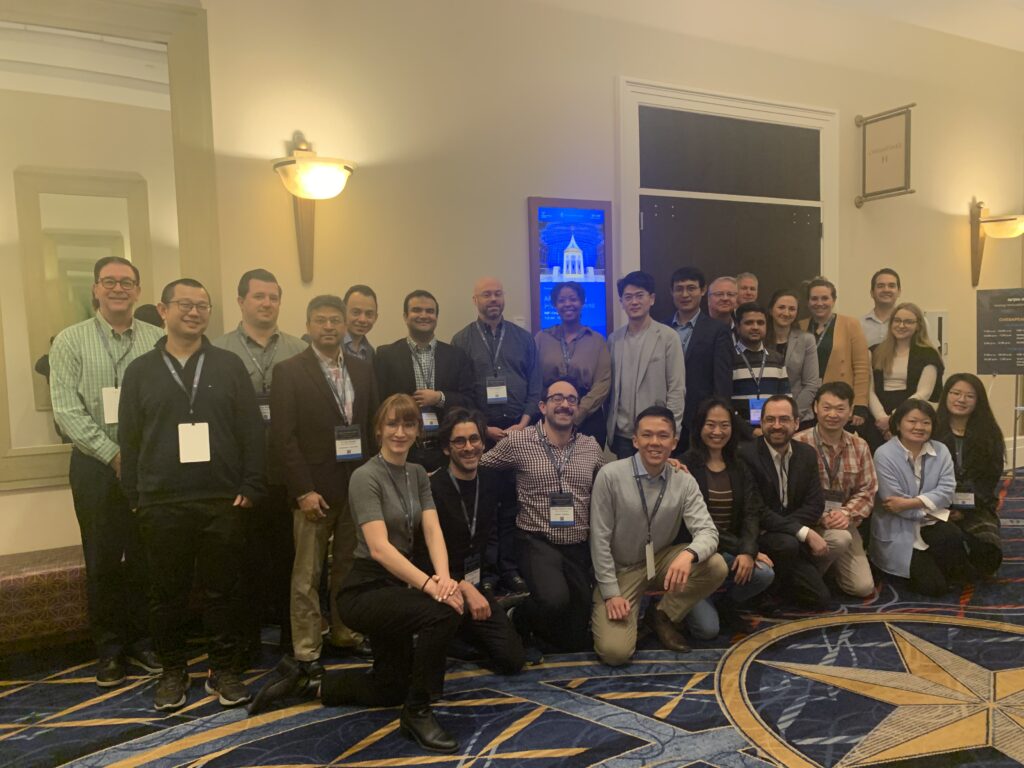The Interior Northeast I-Corps Hub (IN I-Corps) led a specialized regional course for energy researchers in March 2023 that involved tailored virtual entrepreneurship training, followed by sponsored travel to Washington, D.C. for the ARPA-E Energy Innovation Summit.
Teams engaged in customer discovery at the annual conference, which convenes energy stakeholders across disciplines to explore energy innovation and commercialization of new energy technologies.
“Speaking to potential customers allows for better understanding of current challenges faced by industry,” said Mokshin Suri, founder of Pulse-16. “By learning about these current challenges, we can better develop technology that solves real problems for customers and enables successful commercialization.”
“The ARPA-E Summit is especially helpful in this process because it brings together technical experts, industry leaders, and startups with the goal of deploying new technologies focused on sustainability, energy transition, and climate change mitigation,” he added.
Hosted by IN I-Corps Hub partners Binghamton University and West Virginia University, the course began with online training on how to conduct customer discovery interviews in preparation for the Summit. At ARPA-E, the teams received additional coaching and interviewed at least 30 potential customers to better understand their energy innovations’ product-market fit. The course concluded with a final online class session in which participants shared what they learned from the experience of talking to potential customers.
The following 15 teams successfully completed the 2023 ARPA-E course:
- Arbon (Xiangkun Elvis Cao and Xiaoyang Shi – Massachusetts Institute of Technology) is capturing carbon dioxide in the air using moisture swing adsorption technology that only requires water and does not consume heat during regeneration, making the direct air capture process less expensive.
- Curby (Shawn Hutchinson, Shawn Drew, and Zach Wilson – West Virginia University) is building a software platform to guide consumers through methods of reducing carbon emissions from their homes, from home equipment upgrades and renewable energy sources to efficiency upgrades and lifestyle changes.
- DomCat (Dominic Caracciolo and Guojun Shang – Binghamton University) is monitoring fuel inputs and performance durability of fuel cell systems with an innovative smart sensor subsystem.
- Galox (Jonathan McCandless and Debdeep Jena – Cornell University) is applying gallium oxide to make power electronics systems smaller, cheaper, and more efficient as the electric grid transitions to a distributed network.
- HoriZn (Shuolin Xiao – Cornell University) is developing a short-term wind energy prediction process that uses mathematical models and data analysis to forecast how much wind energy turbines will generate in a short period, providing farm operators with real-time information on the availability of wind energy.
- LiBAMA (Wentao Li and Hui Wan – Binghamton University) is improving battery performance and safety with its patented Advanced Metal Anode technology, which employs a porous structure design and a passivation coating to prevent harmful lithium dendrites and increase energy density of batteries.
- MiMiC Systems Inc. (Berardo Matalucci – Rensselaer Polytechnic Institute) is developing a high-performance, solid-state thermoelectric heat pump without refrigerants that aims to reduce cost, maintenance, and carbon emissions from heating and cooling.
- Mission Critical: Green (Olivia Murphy – Cornell University) aims to power the extraction of lithium and hydrogen from seawater using offshore wind electricity, combining three renewable energy generation methods.
- Pinwheel Solar (Bipin Rijal and Tara Dhakal – Binghamton University) is advancing perovskite solar cell technology with an improved structure characterized by more stable layers, resulting in a more durable, better performing, and longer lasting product.
- Pulse-16 (Mokshin Suri – Cornell University) is using pulsed potential electrocatalysis to convert methane gas to valuable fuels like methanol at ambient temperature and pressure, helping customers lower emissions and develop new revenue streams.
- RockFix (Gustavo Marquez, Allen Liang, and Melissa Zhang – Stanford University) is developing a technology to sequester carbon dioxide in mine waste (called tailings), simultaneously recovering critical metals that are otherwise wasted and stabilizing tailings storage facilities to prevent environmental spills and dangerous collapses.
- Sensible Photonics (John Belechak – University of Pittsburgh) is devising a more affordable fiber optic sensing technology that can accurately predict required maintenance and imminent failures in order to improve the safety and reliability of the energy grid.
- Turnover Technologies (Marissa Beatty – Columbia University) is developing composite electrodes that extend the lifetime of carbon dioxide reduction electrolyzers and increase system resistance to impurities.
- VaSA Technology (Alsayed Mostafa – SUNY ESF) is making a nitrogen fertilizer by extracting ammonia from wastewater via vacuum thermal stripping and acid absorption.
- Volexion (Jonathan Pistorino – Northwestern University) is developing graphene coatings for lithium-ion battery components that increase battery power, extend battery life, and reduce battery costs, with potential applications in power tools, drones, electric vehicles, and low-cobalt materials.
“Through interviews at the ARPA-E Summit, we learned about how companies are addressing the challenges associated with methane emissions mitigation, such as avoiding fines associated with the Inflations Reduction Act, changing corporate policies to enable decarbonization, and so on,” Suri said. “By speaking with industry representatives, we gained insight into potential market segments that may adopt our technology in the future.”
I-Corps instructors Olga Petrova (Director, Binghamton University Entrepreneurship & Innovation), Erienne Olesh (Executive Director of Student and Faculty Innovation, West Virginia University), and Jim Aloise (Tech to Market Director, NYSERDA Carbontech Development Initiative at Columbia University) taught the course.
With guidance from experienced entrepreneurs, participants in I-Corps regional courses learn to evaluate the market potential of their technology innovation based on customers’ needs.
Apply now for an upcoming regional course hosted by IN I-Corps.


